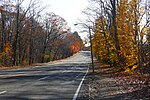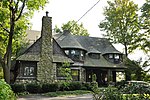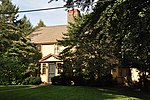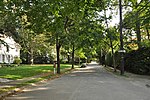Holyhood Cemetery
Buildings and structures in Brookline, MassachusettsCemeteries established in the 1850sCemeteries in Norfolk County, MassachusettsCemeteries on the National Register of Historic Places in MassachusettsCommonwealth War Graves Commission cemeteries in the United States ... and 5 more
National Register of Historic Places in Brookline, MassachusettsRoman Catholic cemeteries in the United StatesRural cemeteriesTourist attractions in Brookline, MassachusettsUse mdy dates from June 2019

Holyhood Cemetery is a cemetery located in Brookline, Massachusetts.
Excerpt from the Wikipedia article Holyhood Cemetery (License: CC BY-SA 3.0, Authors, Images).Holyhood Cemetery
Heath Street,
Geographical coordinates (GPS) Address Nearby Places Show on map
Geographical coordinates (GPS)
| Latitude | Longitude |
|---|---|
| N 42.32 ° | E -71.166944444444 ° |
Address
Heath Street 584
02467
Massachusetts, United States
Open on Google Maps










